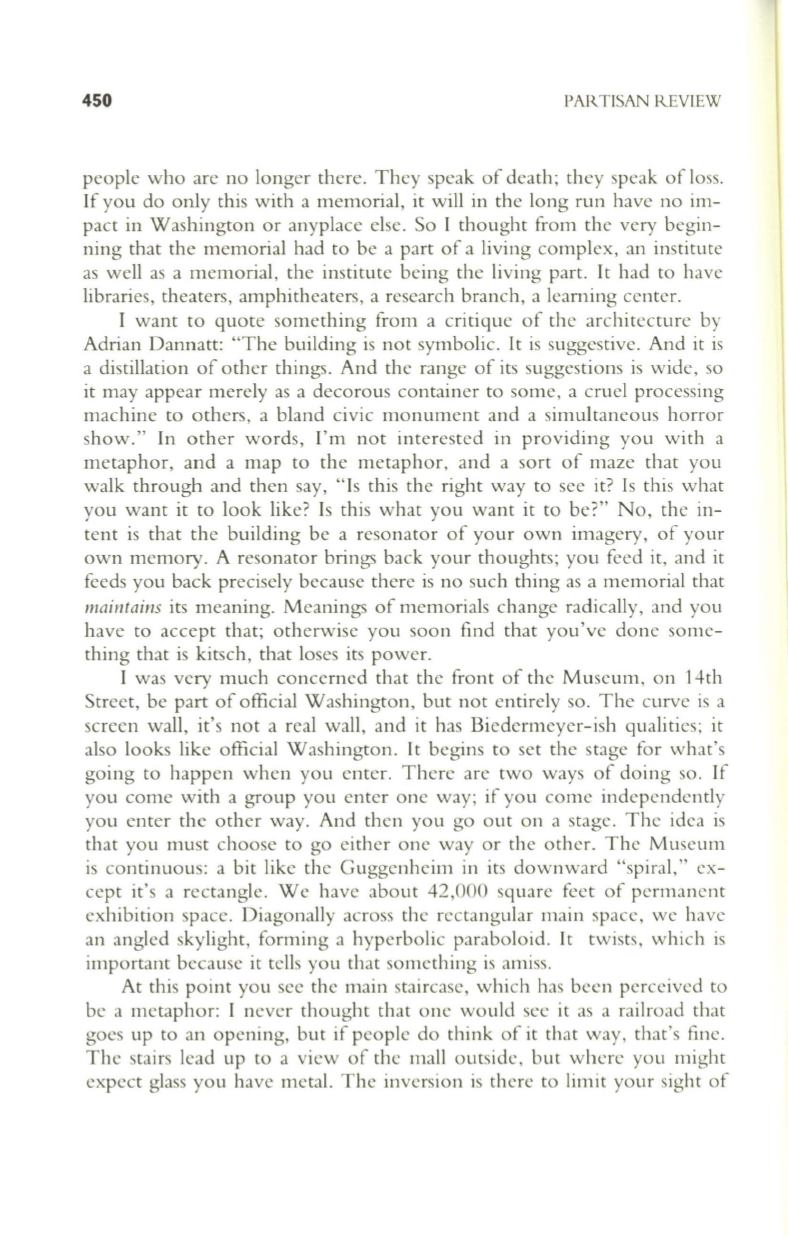
450
PAJ~
TISAN REVIEW
people who are no longer there. They speak of death; they speak of loss.
If you do only this with a memorial, it will in the long run have no im–
pact in Washington or anyplace else. So I thought from the very begin–
ning that the memorial had to be a part of a living complex, an institute
as well as a memorial, the institute being the living part. It had to have
libraries, theaters, amphitheaters, a research branch, a learning center.
I want
to
quote something from a critique of the architecture by
Adrian Dannatt: "The building is not symbolic. It is suggestive. And it is
a distillation of other things. And the range of its suggestions is wide, so
it may appear merely as a decorous container to some, a cruel processing
machine to others, a bland civic monument and a simultaneous horror
show." In other words, I'm not interested in providing you with a
metaphor, and a map to the metaphor, and a sort of maze that you
walk through and then say, "Is this the right way to see it? Is this what
you want it to look like? Is this what you want it to be?" No, the in–
tent is that the building be a resonator of your own imagery, of your
own memory. A resonator brings back your thoughts; you feed it, and it
feeds you back precisely because there is no such thing as a memorial that
maintains
its meaning. Meanings of memorials change radically, and you
have to accept that; otherwise you soon find that you've done some–
thing that is kitsch, that loses its power.
I was very much concerned that the front of the Museum, on 14th
Street, be part of official Washington, but not entirely so. The curve is a
screen wall, it's not a real wall, and it has Biedermeyer-ish qualities; it
also looks like official Washington. It begins to set the stage for what's
going to happen when you enter. There are two ways of doing so. If
you come with a group you enter one way; if you come independently
you enter the other way. And then you go out on a stage. The idea is
that you must choose to go either one way or the other. The Museum
is continuous: a bit like the Guggenheim in its downward "spiral," ex–
cept it's a rectangle. We have about 42,000 square feet of permanent
exhibition space. Diagonally across the rectangular main space, we have
an angled skylight, forming a hyperbolic paraboloid. It twists, which is
important because it tells you that something is amiss.
At this point you see the main staircase, which has been perceived to
be a metaphor: I never thought that one would see it as a railroad that
goes up to an opening, but if people do think of it that way, that's fine.
The stairs lead up to a view of the mall outside, but where you might
expect glass you have metal. The inversion is there to limit your sight of


